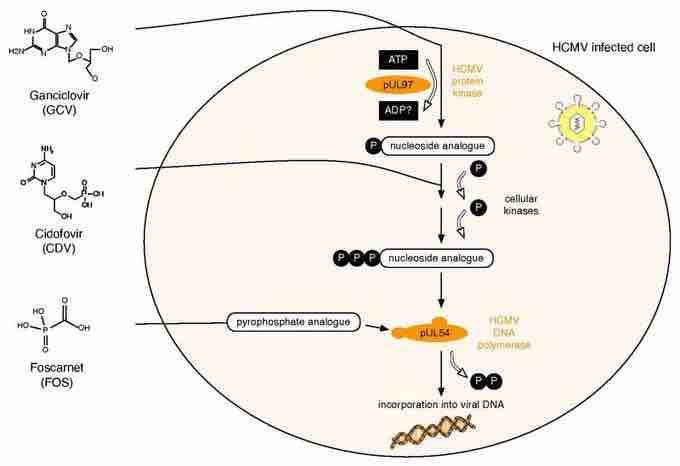Cytomegalovirus (CMV) is a viral genus of the viral family known as Herpesviridae or herpesviruses. The species that infects humans is commonly known as human CMV (HCMV) or human herpesvirus-5 (HHV-5), and is the most studied of all cytomegaloviruses. All herpesviruses can stay latent for long durations. Although they may be found throughout the body, CMV infections are frequently associated with the salivary glands in humans and other mammals. Other CMV viruses are found in several mammal species, but species isolated from animals differ from HCMV in terms of genomic structure, and have not been reported to cause human disease.
HCMV is found throughout all geographic locations and socioeconomic groups, and infects between 50% and 80% of adults in the United States (40% worldwide) as indicated by the presence of antibodies in much of the general population. Seroprevalence is age-dependent: 58.9% of individuals aged 6 and older are infected with CMV while 90.8% of individuals aged 80 and older are positive for HCMV. HCMV is also the virus most frequently transmitted to a developing fetus. HCMV infection is more widespread in developing countries and in communities with lower socioeconomic status; it represents the most significant viral cause of birth defects in industrialized countries. Major areas of risk of infection include prenatal or postnatal infants and immunocompromised individuals, such as organ transplant recipients, persons with leukemia, or those infected with human immunodeficiency virus (HIV).
CMV is generally transmitted from infected people to others through direct contact with body fluids, such as urine, saliva, vaginal secretions, and semen. Although they may be found throughout the body, HCMV infections are frequently associated with the salivary glands. HCMV infection is typically unnoticed in healthy people, but can be life-threatening for the immunocompromised, such as HIV-infected persons, organ transplant recipients, or newborn infants.
CMV, like all herpesviruses, can stay latent for long durations of time. The initial introduction of CMV generally gives way to an extended period of infection during which there is no detectable clinical illness. Severe impairment of the body's immune system reactivates the virus from this dormant state. CMV persists in the host because the viral genome encodes multiple proteins that interfere with major histocompatibility complex (MHC) class I presentation of viral antigens. One viral protein blocks translocation of peptides into the lumen of the endoplasmic reticulum, while two other viral proteins cause degradation of MHC class I proteins before they reach the cell surface. In AIDS patients, CMV can cause loss of vision (cotton wool spots), pneumonia, and hepatitis. Transplant patients with CMV are also susceptible to pneumonia and hepatitis.
A vaccine against (CMV) is currently under investigation. Because CMV can cause congenital infection, considerable effort has been made towards the development of a vaccine, with particular emphasis on protection for pregnant women. There are currently three licensed anti-HCMV drugs target the viral DNA polymerase, pUL54. Ganciclovir (GCV) acts as nucleoside analogue. Its antiviral activity requires phosphorylation by the HCMV protein kinase, pUL97. The second drug, Cidofovir (CDV), is a nucleotide analogue, which is already phosphorylated and thus active. Finally, Foscarnet (FOS) has a different mode of action. It directly inhibits polymerase function by blocking the pyrophosphate binding site of pUL54 .

HCMV drugs
HCMV drugs have been designed to target the virus' DNA polymerase (pUL54), protein kinase (pUL97), and cellular kinases.